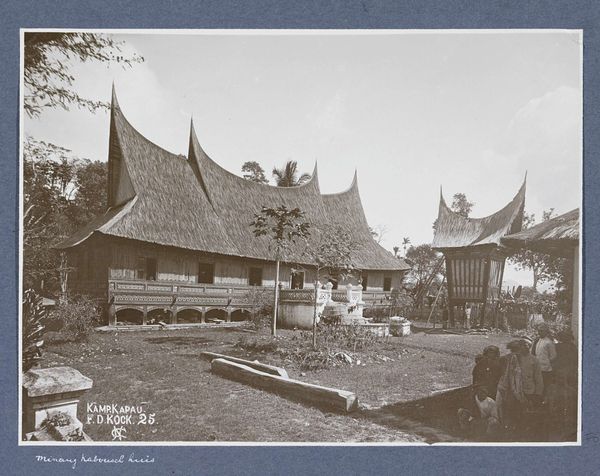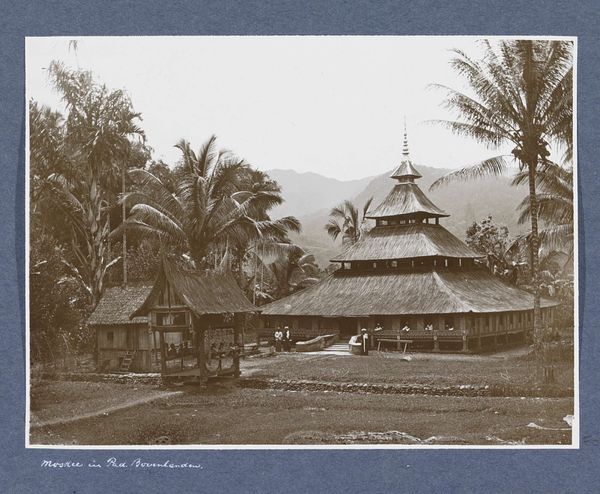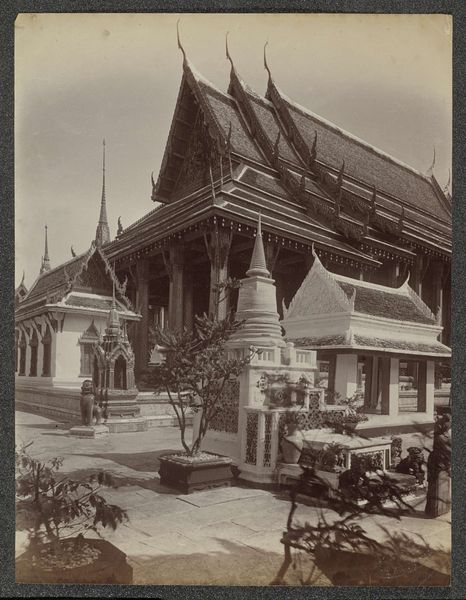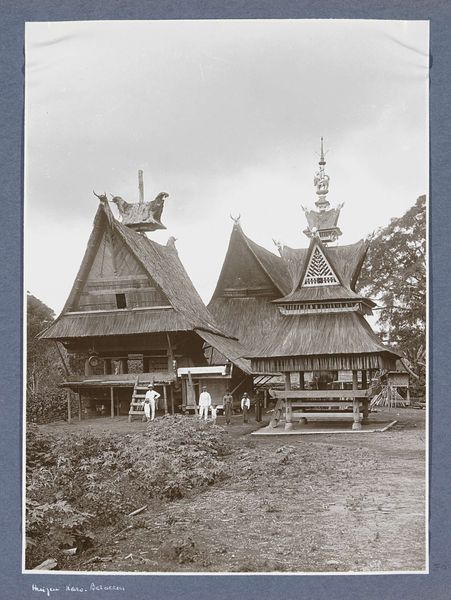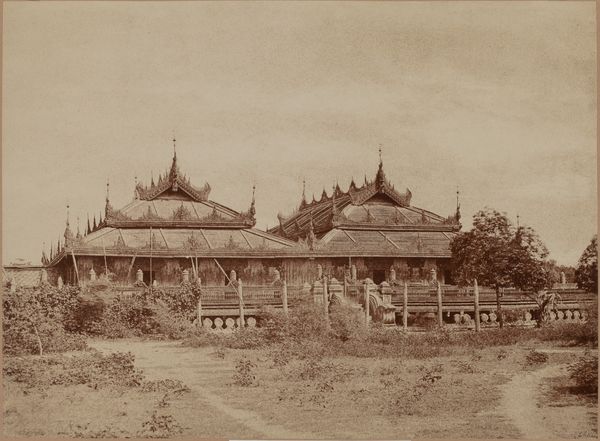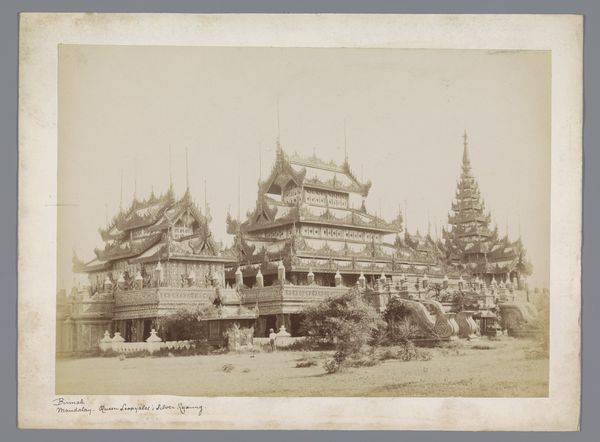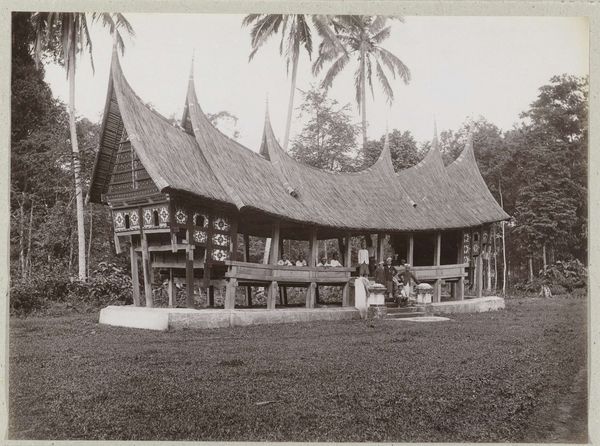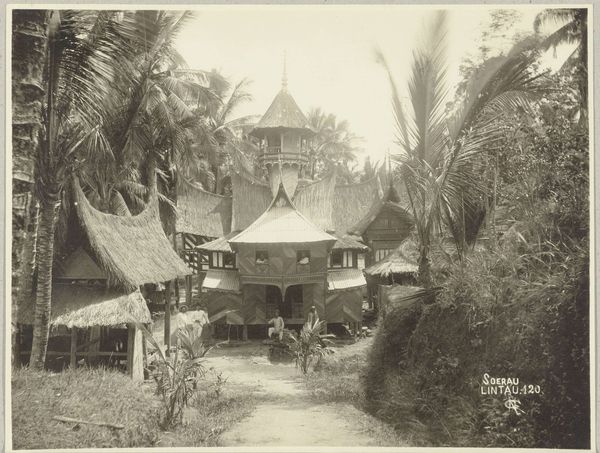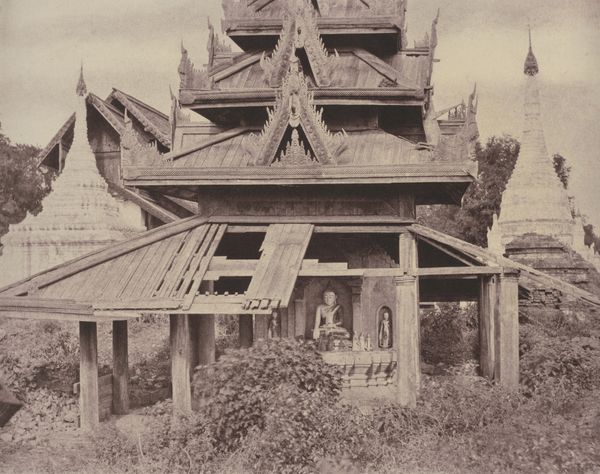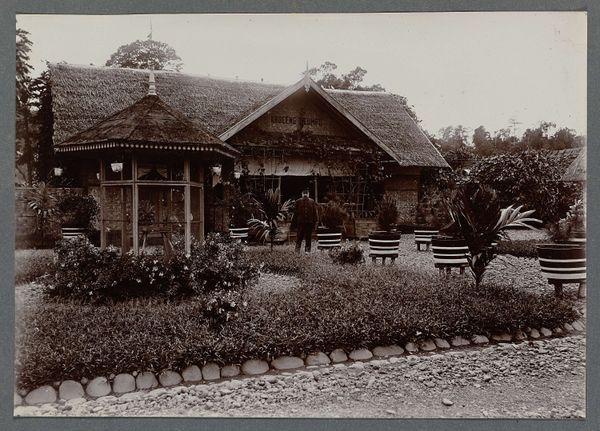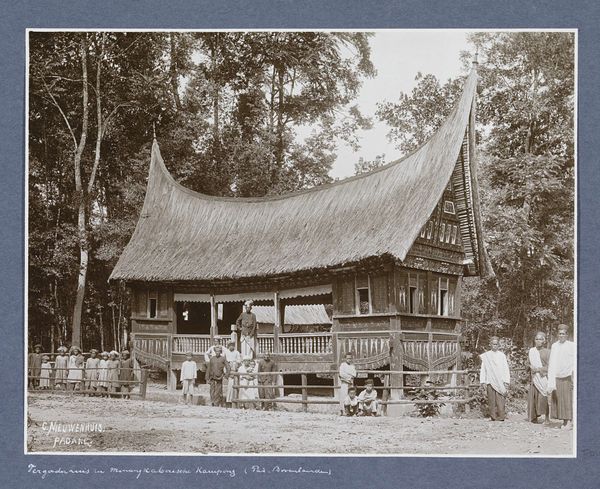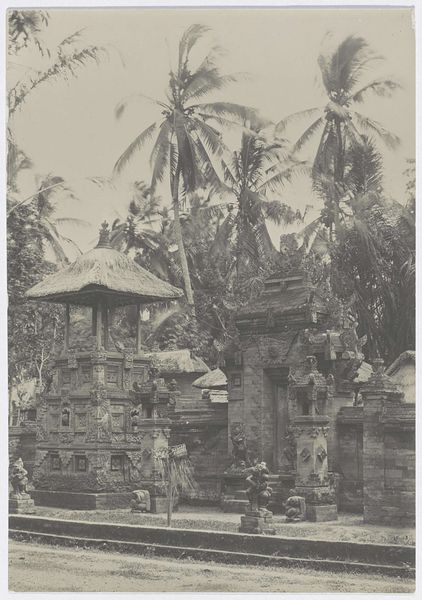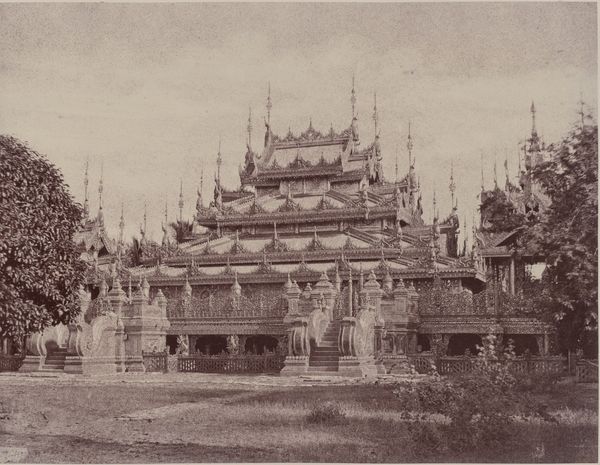
Exterieur van een Minangkabouhuis in Padang Pandjang op Sumatra c. 1900 - 1920
0:00
0:00
christiaanbenjaminnieuwenhuis
Rijksmuseum
photography, architecture
#
asian-art
#
landscape
#
photography
#
architecture
Dimensions: height 225 mm, width 289 mm
Copyright: Rijks Museum: Open Domain
Curator: Well, this photograph practically hums with a sense of place. It’s called "Exterieur van een Minangkabouhuis in Padang Pandjang op Sumatra," taken by Christiaan Benjamin Nieuwenhuis sometime between 1900 and 1920. It resides here at the Rijksmuseum. Editor: It’s certainly striking! Those dramatically curved roofs—they remind me of horns reaching for the sky. There’s almost a gothic sensibility lurking within its vernacular architecture, a fascinating blend of styles and emotions. Curator: The roofs are very distinctive! This type of architecture is typical of the Minangkabau people. They’re meant to resemble buffalo horns, which are deeply symbolic in their culture, referencing a local legend of a buffalo fight that won them their land. Editor: Incredible! It’s all about structure and form, too, the way those horn-like curves rise above and balance that incredible geometric detail. Every facade tile, it seems, repeats in variations on squares and circles within the overarching design. The balance is astonishing. Curator: Exactly, and it all fits in perfectly. The whole photograph kind of melts into this old-world sepia tone that really amplifies the scene’s serenity. I can almost hear the sounds of everyday life going on here, even with just two figures placed within it! Editor: I notice the light. There is a lovely chiaroscuro effect where the roof’s eaves offer partial shadowing. It seems the photographer really worked at presenting both shadow and light at play together and making them appear dynamic. Curator: You’re so right! Photography's interplay of shadow and light enhances the whole composition! I find this piece is just so inviting, so filled with detail about place, culture, and design...it really pulls you in! Editor: Agreed. What a powerful image! From its composition, the photo makes for a deep analysis. Thanks to Christiaan, it offers a poignant commentary on culture, place, and how structural ingenuity tells rich, silent narratives across time.
Comments
No comments
Be the first to comment and join the conversation on the ultimate creative platform.
